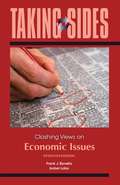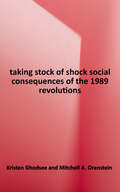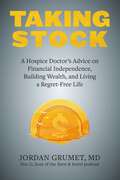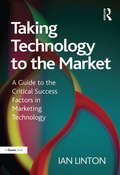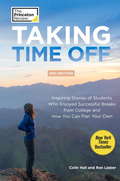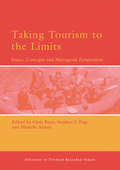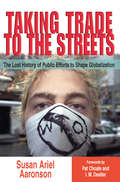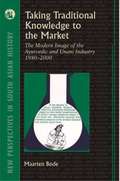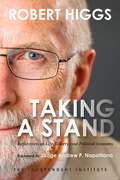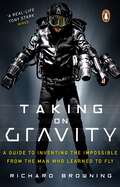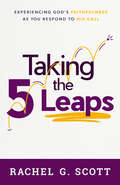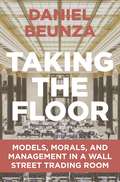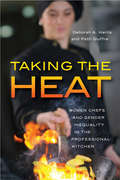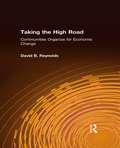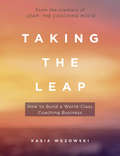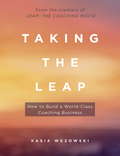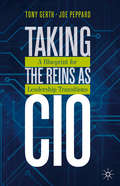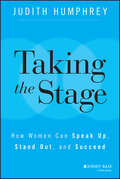- Table View
- List View
Taking Sides: Clashing Views on Economic Issues
by Frank Bonello Isobel LoboTaking Sides: Clashing Views on Economic Issues, Fifteenth Edition, is a debate-style reader designed to introduce students to controversies in economics. The readings, which represent the arguments of leading economists and commentators, reflect a variety of viewpoints and have been selected for their liveliness and substance and because of their value in a debate framework.
Taking Stock of Potential Perils: What Could Go Wrong?
by Richard LueckeCrisis management should begin before the crisis happens--when you can think objectively. Although it is impossible to list every potential business crisis, this chapter identifies some of the major risk categories to show you what to avoid and how to prepare. By conducting a thorough audit of your organizational risks, you can begin to prioritize the risks and then prepare to deal with them.
Taking Stock of Shock: Social Consequences of the 1989 Revolutions
by Kristen Ghodsee Mitchell A. OrensteinKristen Ghodsee and Mitchell A. Orenstein blend empirical data with lived experiences to produce a robust picture of who won and who lost in the post-communist transition, contextualizing the rise of populism in Eastern Europe. After the fall of the Berlin Wall in 1989, more than 400 million people suddenly found themselves in a new reality, a dramatic transition from state socialist and centrally planned workers' states to liberal democracy (in most cases) and free markets. Thirty years later, postsocialist citizens remain sharply divided on the legacies of transition. Was it a success that produced great progress after a short recession, or a socio-economic catastrophe foisted on the East by Western capitalists? <p><P>Taking Stock of Shock aims to uncover the truth using a unique, interdisciplinary investigation into the social consequences of transition--including the rise of authoritarian populism and xenophobia. Showing that economic, demographic, sociological, political scientific, and ethnographic research produce contradictory results based on different disciplinary methods and data, Kristen Ghodsee and Mitchell Orenstein triangulate the results. They find that both the J-curve model, which anticipates sustained growth after a sharp downturn, and the "disaster capitalism" perspective, which posits that neoliberalism led to devastating outcomes, have significant basis in fact. While substantial percentages of the populations across a variety of postsocialist countries enjoyed remarkable success, prosperity, and progress, many others suffered an unprecedented socio-economic catastrophe. <p><p>Ghodsee and Orenstein conclude that the promise of transition still remains elusive for many and offer policy ideas for overcoming negative social and political consequences.
Taking Stock: A Hospice Doctor's Advice On Financial Independence, Building Wealth, And Living A Regret-free Life
by Jordan GrumetLearn what end of life can teach us about the secret to financial independence and making every moment count with this life-altering collection of tips from Dr. Jordan Grumet, host of the award-winning Earn & Invest podcast, featuring a foreword written by Vicki Robin, coauthor of Your Money or Your Life.Written by a hospice doctor with a unique front-row seat to the regrets of his dying patients, this book will remind you to take stock of life now, before it is too late. The goal of financial independence is to have the economic fuel to live a full life and avoid regret. Taking Stock is your guide to taking control of your finances and investing in yourself. Inside you'll find: The three basic archetypes of building wealth, and how to choose which is right for you Time-hacking techniques to modify your perception of time passing and fill your moments with meaning Tips to invest in education, family, and your own physical and mental health And much more! Don't wait until the last moment to live life to the fullest!
Taking Stock: Generation X Today--Making the Most of Your Position in the Workplace
by Tamara EricksonIf you've ever felt sandwiched between the demands of Boomers and Gen Y's in the workplace, you're not alone. Fortunately, there is hope for Generation X, and for you. Jam-packed with practical tips, this chapter delves into what it means to be a Generation X'er and how you can use your generation's unique attributes to your advantage. You will learn how you can use an economic recession to your benefit, how you should adjust your goals and milestone timeline in accordance with increasing life expectancy, and even what your messy office says about you. By taking stock of where you and your fellow Gen X'ers are right now, you will be able to set the stage for moving ahead, planning for the future, and surpassing Boomers and Y's alike. This chapter was originally published as Chapter 2 of What's Next, Gen X?: Keeping Up, Moving Ahead, and Getting the Career You Want.
Taking Sustainable Cities Seriously: Economic Development, The Environment, And Quality Of Life In American Cities (American And Comparative Environmental Policy Series)
by Kent E. PortneyToday most major cities have undertaken some form of sustainability initiative. Yet there have been few systematic comparisons across cities, or theoretically grounded considerations of what works and what does not, and why. In Taking Sustainable Cities Seriously, Kent Portney addresses this gap, offering a comprehensive overview and analysis of sustainability programs and policies in American cities. <P><P>After discussing the conceptual underpinnings of sustainability, he examines the local aspects of sustainability; considers the measurement of sustainability and offers an index of "serious" sustainability for the fifty-five largest cities in the country; examines the relationship between sustainability and economic growth; and discusses issues of governance, equity, and implementation. He also offers extensive case studies, with separate chapters on large, medium-size, and small cities, and provides an empirically grounded analysis of why some large cities are more ambitious than others in their sustainability efforts. <P><P> This second edition has been updated throughout, with new material that draws on the latest research. It also offers numerous additional case studies, a new chapter on management and implementation issues, and a greatly expanded comparative analysis of big-city sustainability initiatives. <P><P> Portney shows how cities use the broad rubric of sustainability to achieve particular political ends, and he dispels the notion that only cities that are politically liberal are interested in sustainability. Taking Sustainable Cities Seriously draws a roadmap for effective sustainability initiatives.
Taking Sustainable Cities Seriously: Economic Development, the Environment, and Quality of Life in American Cities
by Kent E. PortneyTaking Technology to the Market: A Guide to the Critical Success Factors in Marketing Technology
by Ian LintonWith intensifying competitive activity and continuing budget constraints, technology marketing teams are under pressure to be more accountable and deliver measurable results that demonstrate an effective return on investment. To add to the complexity, the market for technology products and services is global, with continuing growth in both developed and developing territories. Taking Technology to the Market provides a practical guide to the critical success factors in marketing technology. It uses a project-based approach, providing comprehensive guidelines for key strategic and tactical marketing programmes. The book will help you improve your chances of developing a winning marketing programme by providing essential steps to success and insight into best practice. Individual chapters provide self-contained guides to planning specific marketing tasks. The range of tasks covers the most common challenges facing marketing teams in technology companies. The book will help you understand the key success factors for overcoming a range of marketing challenges and give you the tools to put specific programmes into action quickly and effectively. The technology sector is a global business characterised by short product cycles, rapid change, longer-term customer relationships, complex decision-making processes, high levels of collaboration and partnership with customers and the supply chain, diverse channels to market and an emphasis on the value of information. These factors make the marketing of technology products and services a distinct discipline within the overall marketing spectrum to which Taking Technology to the Market is the definitive guide.
Taking Time Off, 2nd Edition
by Ron Lieber Colin HallHave you ever thought about taking time off to * ride your bike across the United States?* conduct research in the Amazonian rain forest?* work on a presidential campaign?* build houses for the poor?Tens of thousands of students each year take a break before, or even during college to work, travel, volunteer, or do something just plain different. No matter what you may plan to do with your time away, Taking Time Off shows you how to make the most of it. Included are the inspiring stories of 26 students whose pursuits in their time away from school were fulfilling and enjoyable. You'll find practical advice on every aspect of planning a break, from researching your options and financing your leave to convincing your parents it's a worthy idea. This book's resources section also lists programs, jobs, and American and international organizations that can help you to plan your own time off.
Taking Tourism to the Limits
by Chris Ryan Stephen J. Page Michelle AickenThe concept of margins and limits is often referred to within the tourism academic literature and includes subjects as diverse as carrying capacities, peripheral economies, technological advancement, adventure tourism, dark tourism and socially marginalized communities. After identifying a number of ways in which ‘limits’ might be defined Taking Tourism to the Limits explores concepts and challenges facing contemporary tourism in five main sections, namely in tourism planning and management, nature based tourism, dark tourism, adventure and sport tourism and the accommodation industry.Drawing upon case studies, current research and conceptualizations these different facets of the ‘limits’ are each introduced by the editors with commentaries that seek to identify themes and current practice and thinking in the respective domains. The picture that emerges is of an industry that reinvents itself in response to changing market parameters even while core issues of stakeholder equities and political processes remain problematic.International in scale, the book links with its companion piece Indigenous Tourism – the commodification and management of culture (also published by Elsevier) as an outcome of the very highly successful conference, Taking Tourism to the Limits hosted by the University of Waikato’ Department of Tourism Management in 2003.
Taking Trade to the Streets: The Lost History of Public Efforts to Shape Globalization
by Susan Ariel AaronsonIn the wake of civil protest in Seattle during the 1999 World Trade Organization meeting, many issues raised by globalization and increasingly free trade have been in the forefront of the news. But these issues are not necessarily new. Taking Trade to the Streetsdescribes how so many individuals and nongovernmental organizations came over time to see trade agreements as threatening national systems of social and environmental regulations. Using the United States as a case study, Susan Ariel Aaronson examines the history of trade agreement critics, focusing particular attention on NAFTA (the North American Free Trade Agreement between Canada, Mexico, and the United States) and the Tokyo and Uruguay Rounds of trade liberalization under the GATT. She also considers the question of whether such trade agreement critics are truly protectionist. The book explores how trade agreement critics built a fluid global movement to redefine thetermsof trade agreements (the international system of rules governing trade) and to redefine how citizens talk about trade. (The "terms of trade" is a relationship between the prices of exports and of imports. ) That movement, which has been growing since the 1980s, transcends borders as well as longstanding views about the role of government in the economy. While many trade agreement critics on the left say they want government policies to make markets more equitable, they find themselves allied with activists on the right who want to reduce the role of government in the economy. Aaronson highlights three hot-button social issues--food safety, the environment, and labor standards--to illustrate how conflicts arise between trade and other types of regulation. And finally she calls for a careful evaluation of the terms of trade from which an honest debate over regulating the global economy might emerge. Ultimately, this book links the history of trade policy to the history of social regulation. It is a social, political, and economic history that will be of interest to policymakers and students of history, economics, political science, government, trade, sociology, and international affairs. Susan Ariel Aaronson is Senior Fellow at the National Policy Institute and occasional commentator on National Public Radio's "Morning Edition. "
Taking Traditional Knowledge to the Market: The Modern Image of the Ayurvedic and Unani Industry, 1980-2000
by Maarten BodeTaking Traditional Knowledge to the Market explores the paradox at the heart of the ayurvedic and unani medicine manufacturing industry--to present itself as modern and traditional, common and professional at the same time.
Taking Vulnerabilities to Labour Exploitation Seriously: A Critical Analysis of Legal and Policy Approaches and Instruments in Europe (IMISCOE Research Series)
by Letizia PalumboThis open access book intends to contribute to the debate on migrant labour exploitation by exploring the extent to which the EU and the European countries provide a standard for protecting migrant workers. It moves from a socio-legal and theoretical perspective and builds on critical studies on vulnerability, exploitation, trafficking and migrant labour regimes – along with relevant feminist theories, including theories on social reproduction – while also drawing on extensive fieldwork. By mobilising the concept of ‘situational vulnerabilities’, the book critically investigates the assemblage and interaction of factors creating and amplifying migrant workers’ vulnerabilities to exploitation in the key sectors of agriculture and domestic work. The aim is to highlight how situations of vulnerability to exploitation are generated and exacerbated by relevant legal and policy frameworks, underlining and questioning the tensions, continuities, and ambiguities between different regimes, such as the regimes regulating labour migration and those intended to combat severe exploitation. While at national level the focus is on relevant Italian legal and policy instruments and approaches, the book also offers a comparative look at those adopted in the UK. This critical analysis considers labour exploitation both in its systemic dimension and as a continuum. It sheds lights on how forms of exploitation are associated with different ‘situational’ vulnerabilities produced by the interplay of personal and structural factors in line with a gender and intersectional approach. By engaging an analysis of the ways in which the concepts of exploitation and vulnerability are addressed and formulated in various international, European, and national legal and policy instruments, the study reveals the limitations and ambiguities of applicable legislation and policies. The book is a great resource for students and academics in the field as well as legal practitioners and policymakers interested in human rights, migration studies, labour rights, labour exploitation, and gender related issues.
Taking a Stand: Reflections on Life, Liberty, and the Economy
by Robert HiggsRenowned economist and historian Robert Higgs has pioneered a whole new understanding of the causes, means, and effects of government power and the need to deconstruct statism and re-establish institutions that protect and advance liberty, prosperity, and peace.In the course of his work, he has completed seminal work on such issues as health care, the environment, law and economics, urban development, race discrimination, agriculture, immigration, war and peace, economic development, government spending and debt, welfare, money and banking, presidential power, civil liberties, the Great Depression, science, unemployment, and far more. Now Taking a Stand offers the grand opportunity to make his vast insights available to general readers by combining his keen analysis with his engaging wit, humility and compassion in order to charm, educate and inspire people on the moral and practical imperative of individual liberty, entrepreneurship and innovation, peace, economic growth, personal responsibility, civic virtue, and the rule of law. Taking a Stand is organized into 99 short, accessible chapters to present a powerful and uplifting vision for the future.
Taking on Gravity: A Guide to Inventing the Impossible from the Man Who Learned to Fly
by Richard Browning**As seen on Top Gear**'Richard Browning is a real-life Tony Stark.' - Wired---------------For fans of Adrian Newey, Guy Martin and Chris Hadfield, in Taking on Gravity inventor Richard Browning tells the inspiring story behind his iconic jet suit, and shares his creative principles for generating true innovation.From Icarus to Iron Man, the dream of human flight has always inspired and challenged us. Now, with his pioneering jet suit, Richard Browning has redefined what is possible.Richard Browning's story is one of groundbreaking innovation. Building an aviation business from his garage, he has invented a whole new form of personal flight - a fantasy previously reserved for the pages of science fiction. His iconic jet suit has captured the imaginations of millions around the world, triggered ongoing developments in technology and engineering, and inspired a new generation of creative minds to pursue their dreams.In Taking on Gravity, Browning reveals the creative principles of his multimillion-pound company, Gravity Industries, and shows us how grass-roots innovation can disrupt established industries in exciting and unexpected ways. On this journey into the sky we'll experience what it's like to take flight, to test the limits of the human body, and to convert moonshot ideas into tangible results.The Gravity story is an inspiring example of human creativity and our ceaseless desire to push the boundaries of what is possible. Where we go next is up to you.READERS LOVE THE 'TAKING ON GRAVITY' STORY***** 'Tony Stark Lite'***** 'Must read for anyone looking for inspiration to continue pursuing their dream'***** 'Taking on Gravity by Richard Browning is equal parts inspiring, inquisitive, soulful and ultimately a fantastic read that I will return to again.'
Taking the 5 Leaps: Experiencing God's Faithfulness as You Respond to His Call
by Rachel G. ScottWhen is the last time God called you to do something that felt terrifying?When God nudges us into the unknown, it can be thrilling and exciting but also overwhelming and risky. Whether you&’re a stay-at-home mom, a corporate leader looking to follow God&’s calling, or retiree who knows you have more to give to the world, this book was written for you. Wife, mother, Bible teacher, and entrepreneur Rachel G. Scott loves to help men and women navigate their God-given callings. In Taking the 5 Leaps, Rachel equips readers to go from delay to action. What kind of leap are you being invited to make? And how can you prepare, plan, and execute that leap? This book outlines five types of leaps you can take using illustrations from the Bible and personal stories. Taking a risk of any kind is often accompanied with feelings of fear, uncertainty, and hesitancy. It requires courage and wisdom. In the Bible, we meet several leapers who learned to make obedience to God a non-negotiable. Rachel introduces us to biblical characters who have paved the way to lead us into a greater understanding of God&’s heart and intentions for modern-day leapers. This is your invitation to take the leap and partner with God in living a leaping lifestyle!I would love to be your leap mentor for a few days, weeks, or months. We will go at your pace. I want to cheer you on as you learn from my mistakes and successes about how to leap into God&’s destiny for you. Taking leaps always includes risks and tons of unknowns, but I want you to remember that the risk is worth Heaven&’s reward. – Rachel G. Scott
Taking the Floor: Models, Morals, and Management in a Wall Street Trading Room
by Daniel BeunzaDebates about financial reform have led to the recognition that a healthy financial system doesn’t depend solely on how it is structured—organizational culture matters as well. Based on extensive research in a Wall Street derivatives-trading room, Taking the Floor considers how the culture of financial organizations might change in order for them to remain healthy, even in times of crises. In particular, Daniel Beunza explores how the extensive use of financial models and trading technologies over the recent decades has exerted a far-ranging and troubling influence on Wall Street. How have models reshaped financial markets? How have models altered moral behavior in organizations?Beunza takes readers behind the scenes in a bank unit that, within its firm, is widely perceived to be “a class act,” and he considers how this trading room unit might serve as a blueprint solution for the ills of Wall Street’s unsustainable culture. Beunza demonstrates that the integration of traders across desks reduces the danger of blind spots created by models. Warning against the risk of moral disengagement posed by the use of models, he also contends that such disengagement could be avoided by instituting moral norms and social relations.Providing a unique perspective on a complex subject, Taking the Floor profiles what an effective, responsible trading room can and should look like.
Taking the Heat
by Deborah A. Harris Patti GiuffreA number of recent books, magazines, and television programs have emerged that promise to take viewers inside the exciting world of professional chefs. While media suggest that the occupation is undergoing a transformation, one thing remains clear: being a chef is a decidedly male-dominated job. Over the past six years, the prestigious James Beard Foundation has presented 84 awards for excellence as a chef, but only 19 were given to women. Likewise, Food and Wine magazine has recognized the talent of 110 chefs on its annual "Best New Chef" list since 2000, and to date, only 16 women have been included. How is it that women--the gender most associated with cooking--have lagged behind men in this occupation? Taking the Heat examines how the world of professional chefs is gendered, what conditions have led to this gender segregation, and how women chefs feel about their work in relation to men. Tracing the historical evolution of the profession and analyzing over two thousand examples of chef profiles and restaurant reviews, as well as in-depth interviews with thirty-three women chefs, Deborah A. Harris and Patti Giuffre reveal a great irony between the present realities of the culinary profession and the traditional, cultural associations of cooking and gender. Since occupations filled with women are often culturally and economically devalued, male members exclude women to enhance the job's legitimacy. For women chefs, these professional obstacles and other challenges, such as how to balance work and family, ultimately push some of the women out of the career. Although female chefs may be outsiders in many professional kitchens, the participants in Taking the Heat recount advantages that women chefs offer their workplaces and strengths that Harris and Giuffre argue can help offer women chefs--and women in other male-dominated occupations--opportunities for greater representation within their fields. Click here to access the Taking the Heat teaching guide (http://rutgerspress.rutgers.edu/pages/teaching_guide_for_taking_the_heat.aspx).
Taking the High Road: Communities Organize for Economic Change
by David B ReynoldsThis book presents a vision for farreaching economic change in America connected to practical grassroots steps. It points to an economic system in which corporate success merges with the long-term welfare of the workers and the general population. The author examines the continued reality of social democracy in Europe and what lessons can be learned for the U.S. He demonstrates how progressive economic change is already being fought for by labor and community groups throughout America in such efforts as the Living Wage Movement and the emerging battle against sprawl. And he provides a wealth of concrete examples, tools, and ideas that everyone can use to organize for economic and social justice in their own communities.
Taking the Leap: How to Build a World-Class Coaching Business
by Kasia WezowskiOrganized into three sections: Finding Yourself and Your Purpose, Finding Your Clients, and Finding Success, Taking the Leap provides relevant and practical advice from twenty-four well-known coaches who have built sustainable coaching businesses whole doing what they love-helping people.Success tips and strategies from global, coaching masters infused with their own personal accounts of how they got their start:MARSHALL GOLDSMITH on becoming a better businesspersonJACK CANFIELD on continuous improvementKIERON SWEENEY on promoting yourselfHEATHER RAMSEY on selecting a business modelMARK THOMPSON on partnering with industry leaders and influencersKELVIN LIM on specializationJOHN DEMARTINI on putting your mission firstPATRYK WEZOWSKI on scaling your businessMARC STEINBERG on inner wisdomMIRNA BACUN on leveraging LinkedInVISHEN LAKHIANI on building a visionary business
Taking the Leap: How to Build a World-Class Coaching Business
by Kasia WezowskiMake your mark as a coach and grow your business by learning from the best, highest-level coaches in the world who are willing to share their secrets and core strategies. Relevant and practical with strategies specific to current and aspiring coaches, Taking the Leap provides advice from well-known coaches including: Jack Canfield, Marshall Goldsmith, Cherie Carter-Scott and Mark Thompson, who have each built lucrative coaching businesses while doing what they love: helping people.
Taking the Measure of Work: A Guide to Validated Scales for Organizational Research and Diagnosis
by Dail L. FieldsThis book is a handbook for people who want to assure the use of reliable and valid questionnaires for collecting information about organizations. It significantly reduces the time and effort required for obtaining validated multi-question measures of aspects of organizational 'health' such as employee job satisfaction, organizational commitment, organizational justice, and workplace behaviors. It helps users in measuring some factors underlying employee perceptions of work such as job characteristics, role ambiguity or conflict, job stress, and the extent to which employees believe their values and those of the organization are congruent. All the measures in the book have been used and tested in research studies published in the 1990's. <p><p>In addition, all the measures describe the extent and types of reliability and validity tests that have been completed, a feature that organizational researchers should find particularly useful. All in all, this book is a handy tool to increase the efficiency of researchers, consultants, managers, or organizational development specialists in obtaining reliable and valid information about how employees view their jobs and organizations.
Taking the Reins as CIO: A Blueprint for Leadership Transitions
by Joe Peppard Tony GerthAn executive’s transition into any leadership role can be a challenge. Such transitions do not always go smoothly, and the negative consequences can be significant. This is particularly so for Chief Information Officers (CIOs), as the role has evolved significantly over the years yet remains deeply ambiguous. This is despite information and technology moving from the periphery of an organization to a fundamental driver of innovation and competitive advantage. This book is to help the newly appointed CIO “take charge”: the process of learning and taking action that the newly appointed CIO goes through until s/he has mastered the new assignment in sufficient depth to be effective in the role. This book provides keen insights into the challenges faced by today's CIOs while transitioning into a new role and enlightens readers on how to navigate the organizational environment in order to implement necessary changes. With plenty of practical tools and insights it will help you to: • Decide how best to approach the job • Prioritize the first areas of the business you should attend to • Draw up your goals for the first few weeks and months into the role • Find out if there are there any decisions that you can postpone making Based on over 200 interviews with CIOs, CxOs, and recruiters, this book offers readers guidance on how to take on the role of a business executive with special responsibility for information and technology, with ten key prescriptions to maximize success.
Taking the Right Path: Look Inside Your Firm to Leverage Knowledge
by Bart Victor Andrew C. BoyntonTo maximize internal growth and profitability, organizations must transform people's work in order to leverage the value of previous learning and take full advantage of future learning. This chapter examines how organizations can leverage knowledge to achieve competitive advantage.
Taking the Stage
by Judith HumphreyMany women today wonder: what will it take to get that seat at the boardroom table? Earn that coveted promotion? Or simply have their voices heard? Taking the Stage provides a comprehensive, proven approach that enables women to come forward into the spotlight and speak up, stand out, and succeed.Based on a program from the Humphrey Group that has been delivered to over 400,000 women worldwide, Taking the Stage shows women--no matter their age, rank, or profession--how to communicate with courage and confidence in every situation, from formal speeches to brief hallway conversations. Judith Humphrey provides the inspiration and practical advice for women to "take the stage" mentally, verbally, vocally, and physically. Women can make the most of every opportunity by understanding how best to:Speak up confidently, even when others don't agree;Convey their accomplishments without self-doubt;Be assertive but not aggressive;Deliver clear and convincing messages;Move beyond "minimizing" language and apology;Find their own powerful and authentic voice;Achieve confident body language and a leadership presence.By applying these techniques and others to every communication-- whether making a presentation, speaking at meetings, conducting an elevator conversation, or selling themselves in job interviews--women will be recognized as the leaders they are and attain positions of influence.For women at all stages of their career, and for managers and executives committed to supporting and guiding women on their leadership journeys, Taking the Stage is the practical, broad-based solution that will allow women to speak up confidently, gain respect, earn the promotions they deserve, and secure their places at the boardroom table.
